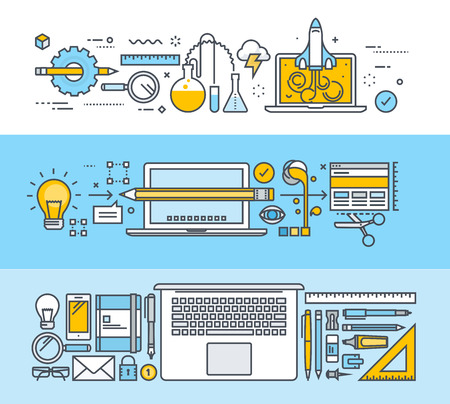Introduction: Feng Shui Meets Silicon Valley
In the heart of California, Silicon Valley pulses with a unique energy—one driven by relentless innovation, creative problem-solving, and high-stakes competition. For tech startups, every detail of the workspace can influence productivity, morale, and ultimately, success. While many founders focus on cutting-edge technology and agile workflows, an increasing number are turning to ancient wisdom to gain a competitive edge. Enter Feng Shui—a centuries-old Chinese practice designed to harmonize individuals with their environment. But what does this have to do with coding marathons, pitch meetings, and breakthrough ideas? This intersection between tradition and modernity is exactly where many Silicon Valley startups are finding new ways to thrive. As we explore how Feng Shui principles can balance energy in high-tech workspaces, well see that optimizing office flow isnt just about aesthetics—its about creating environments where creativity flourishes and teams perform at their best. In the fast-paced world of startups, where stress and burnout are ever-present risks, a thoughtfully balanced space could make all the difference.
2. Mapping Qi in Modern Workspaces
In the heart of Silicon Valley, where open-plan offices and adaptable workspaces dominate, understanding how Qi—or vital energy—flows through these environments is crucial for tech startups aiming to cultivate creativity and productivity. While traditional Feng Shui often focused on homes or fixed office structures, today’s dynamic workplaces require updated approaches to energy mapping that respect both ancient wisdom and modern realities.
Identifying Qi in Open-Plan and Flexible Offices
Qi can be observed through both tangible and intangible cues within a workspace. In open-plan layouts common among tech startups, the flow of people, sound, light, and even digital activity reflects the movement of energy. Key indicators of healthy Qi include spaces where collaboration feels natural, employees report high focus, and there is a sense of ease moving from one area to another. Conversely, signs of blocked or stagnant Qi may appear as persistent distractions, interpersonal tension, or “dead zones” where nobody wants to sit or work.
Practical Methods for Evaluating Energy Patterns
Mapping Qi doesn’t require mystical insight—it’s grounded in observation and practical assessment. Below are methods tailored for startup environments:
| Method | Description | Application Example |
|---|---|---|
| Flow Mapping | Track common movement patterns of staff throughout the day. | Use floor plans to mark high-traffic areas and identify bottlenecks or isolated corners. |
| Environmental Scanning | Assess light levels, air quality, noise sources, and temperature changes. | Identify areas with harsh lighting or noisy distractions that disrupt energy flow. |
| Energy Feedback Surveys | Collect employee input on how different spaces feel for work and collaboration. | Create short polls to gauge comfort and focus levels across zones like meeting pods or lounges. |
| Space Utilization Analysis | Monitor which desks or rooms are used most or least frequently. | Leverage occupancy sensors or booking data to find underutilized “cold spots.” |
Cultural Adaptation: The American Startup Context
In the U.S., especially in tech hubs like San Francisco and Palo Alto, blending Feng Shui principles with startup culture means focusing on transparency, flexibility, and well-being. Rather than rigidly adhering to tradition, successful teams treat Qi mapping as an ongoing process—adjusting desk arrangements after each product sprint or rebalancing communal spaces as company needs evolve. This dynamic approach ensures the workspace continuously supports innovation while staying true to both practical results and the energetic harmony at the core of Feng Shui.

3. Tech-Friendly Feng Shui Adjustments
In Silicon Valley, where innovation and technology shape the workspace, integrating Feng Shui doesn’t mean you have to compromise on efficiency or digital convenience. It’s about harmonizing high-tech environments with positive energy flow. Here’s how tech startups can embrace actionable Feng Shui principles while accommodating modern tools and collaborative work zones.
Optimize Desk Placement for Energy Flow
The cornerstone of office Feng Shui is the “command position.” Place desks so that team members face the entrance without sitting directly in line with the door. This fosters a sense of control and reduces stress, which is crucial for productivity and creativity in fast-paced tech settings. Avoid placing desks with employees’ backs to windows or busy walkways—this can drain focus and energy.
Cable Management: Taming the Digital Clutter
Few things disrupt energy flow like tangled cables and scattered chargers. Use cable organizers or wireless charging stations to keep cords out of sight and off the floor. Not only does this reduce tripping hazards and distractions, but it also symbolizes clear pathways for ideas and opportunities—vital for startup growth.
Hardware Organization: Balance Efficiency With Order
Tech startups often accumulate an array of monitors, laptops, tablets, and smart devices. Designate specific zones for different hardware types, ideally keeping frequently used items within arm’s reach but not overcrowding the desk space. Store extra equipment in closed cabinets to minimize visual chaos, supporting both mental clarity and energetic balance.
Create Collaborative Zones Without Blocking Chi
Encourage teamwork by designing open-plan areas with rounded tables or modular seating, allowing energy (Chi) to circulate freely among team members. Avoid sharp corners pointed at seating areas, as these are believed to create “poison arrows” that disrupt harmony. Incorporate greenery or soft lighting between clusters to buffer harsh digital energy and promote a welcoming environment.
Integrate Technology Mindfully
Finally, remember that devices themselves can be balanced energetically. Position screens at eye level to reduce tension, use blue-light filters to minimize fatigue, and introduce natural elements (like small plants or stones) near workstations to ground electronic vibrations. By blending these practical Feng Shui adjustments with Silicon Valley’s digital demands, startups can cultivate spaces where innovation flows as smoothly as positive Chi.
Boosting Collaboration and Innovation with Elements
In the high-energy world of Silicon Valley, fostering collaboration and innovation is essential for tech startups aiming to disrupt markets. Applying the Five Elements of Feng Shui—Wood, Fire, Earth, Metal, and Water—offers a strategic approach to harmonizing workspaces, maximizing team synergy, and cultivating creativity. Each element carries unique properties that resonate with specific aspects of startup culture, and their dynamic interplay can elevate both morale and productivity.
The Role of the Five Elements in Team Dynamics
Understanding how each element influences workplace behavior enables founders and managers to intentionally design environments that support their teams’ goals. Here’s how these elements align with collaborative and innovative capacities:
| Element | Symbolism | Workspace Application | Impact on Team |
|---|---|---|---|
| Wood | Growth & Flexibility | Live plants, wooden furniture, green hues | Sparks new ideas, supports adaptability |
| Fire | Passion & Visibility | Naturally lit areas, red accents, communal brainstorming zones | Inspires enthusiasm and bold thinking |
| Earth | Stability & Trust | Ceramic decor, earth tones, central gathering spaces | Builds strong relationships and trust among team members |
| Metal | Clarity & Precision | Metal fixtures, white/gray palettes, organized workstations | Promotes focus, structure, and clear communication |
| Water | Flow & Inspiration | Aquariums, glass features, blue accents | Nurtures creative flow and open-mindedness |
The Interplay of Elements in Startup Culture
The Five Elements are not meant to stand alone; their power lies in interaction. For example, placing Wood (creativity) near Fire (passion) zones encourages brainstorming sessions where ideas ignite quickly. Earth’s stabilizing influence in shared lounges grounds high-energy debates sparked by Fire or Metal. Too much Water might dampen motivation but provides balance when paired with Fire-driven workstations. By consciously blending these elements throughout a workspace, leaders create an ecosystem where diverse personalities can thrive together.
Cultural Resonance for U.S.-Based Startups
This approach resonates with American startup values: innovation (Fire), inclusivity (Earth), efficiency (Metal), growth (Wood), and adaptability (Water). As Silicon Valley teams often blend multicultural backgrounds and agile methodologies, integrating Feng Shui’s elemental wisdom becomes both a practical tool and a cultural bridge—enhancing collaboration without sacrificing individuality or speed.
5. Case Studies: Startups Harmonizing for Success
While Silicon Valley is renowned for its cutting-edge innovation, several tech startups have turned to Feng Shui principles to shape environments that foster not only productivity but also employee well-being and business prosperity. Here, we share both real-life cases and hypothetical scenarios that illustrate the transformative power of intentional workspace design.
Aligning Entryways: The Welcoming Flow at ByteSpark
ByteSpark, a San Jose-based SaaS startup, noticed frequent team miscommunications and sluggish project momentum. After consulting a Feng Shui expert, they reconfigured their entryway to be clutter-free, well-lit, and inviting, symbolically opening the “mouth of chi.” They also introduced greenery near the entrance to enhance vitality. Within months, staff reported increased clarity and collaboration, while quarterly targets were met more consistently.
Balancing Yin and Yang: CodeNest’s Workspace Transformation
At CodeNest, engineers often felt burnt out despite the company’s open-concept office. Management implemented a balanced approach by creating designated quiet zones (yin) with soft lighting and comfortable seating alongside collaborative “yang” hubs energized with bold colors and standing desks. This duality not only reduced fatigue but also sparked a 20% increase in creative output as measured by successful feature launches.
Strategic Desk Placement: The Power Position at NeuralBridge
A hypothetical example comes from NeuralBridge, an AI startup aiming to secure its first major round of funding. The leadership arranged desks so that key team members sat facing the main door—an application of the Feng Shui “command position”—to enhance focus and authority. This subtle shift boosted confidence during investor meetings and was followed by a successful Series A close.
Harmonizing Elements: Elemental Integration at GreenLogic
GreenLogic, a renewable energy startup, incorporated all five elements—wood, fire, earth, metal, and water—into their workspace décor. Wooden desks promoted growth; metal accents enhanced clarity; potted plants brought in earth energy; blue art represented water for adaptability; and subtle lighting effects offered fire’s inspiration. Employees noted an improved sense of balance and motivation during product sprints.
Morale Matters: Team Spirit at AppVibe
AppVibe faced high turnover until it integrated Feng Shui-inspired communal spaces filled with natural light, round tables to encourage equality, and artwork depicting upward movement. These changes fostered openness and teamwork, resulting in higher retention rates and improved employee satisfaction scores.
These examples highlight how even in high-tech environments like Silicon Valley, ancient wisdom can merge with modern ambition. By mindfully applying Feng Shui principles, startups can create workspaces that support not just business goals but also the holistic success of their teams.
6. Simple Rituals for Silicon Valley Teams
While the pace of life in Silicon Valley is famously fast, integrating Feng Shui-inspired rituals doesn’t have to slow your team down. In fact, small, intentional routines can help reduce stress and spark positive energy without disrupting workflow. Here are several culturally relatable practices that fit seamlessly into the tech startup environment:
Morning Light Activation
Encourage your team to start each day by opening blinds or curtains together, letting in natural light. This simple act reflects the Feng Shui principle of inviting fresh Qi (energy) into the workspace. Natural sunlight helps boost mood and alertness—just what’s needed for a productive morning stand-up.
Five-Minute Desk Reset
Set aside five minutes after lunch for everyone to tidy up their workstations. Removing clutter and organizing cords and devices not only aligns with Feng Shui’s emphasis on clear pathways but also creates a collective sense of accomplishment. Consider playing calming background music or ringing a small bell to mark the transition back to focused work.
Midday Breathing Breaks
Schedule a brief group breathing exercise around mid-afternoon—when energy tends to dip. Invite team members to close their eyes, take deep breaths, and visualize positive outcomes for their projects. This mindfulness practice channels good energy (Sheng Qi) and helps re-center the mind, echoing both Eastern and Western wellness trends.
The Gratitude Stand-Up
Once a week, add a quick round of gratitude sharing at the end of a team meeting. Each person names one thing they appreciate about their work or colleagues. This ritual resonates with both Feng Shui’s focus on harmonious relationships and the American tradition of team-building positivity.
Water Cooler Connections
Place a small water feature or healthy hydration station in a common area. According to Feng Shui, flowing water symbolizes abundance and communication. Gathering here for informal chats can encourage idea flow while subtly reinforcing the importance of balance—work, rest, and connection.
End-of-Day Closure
Before leaving, invite everyone to power down devices and spend a minute reflecting on what went well during the day. Whether it’s jotting down wins or simply saying “thank you” as they exit, this closing routine clears out stagnant energy, setting the stage for renewed creativity tomorrow.
By blending these accessible rituals into daily operations, Silicon Valley teams can harness Feng Shui principles without sacrificing efficiency—making the workplace not only more balanced but also more vibrant and supportive of innovation.


